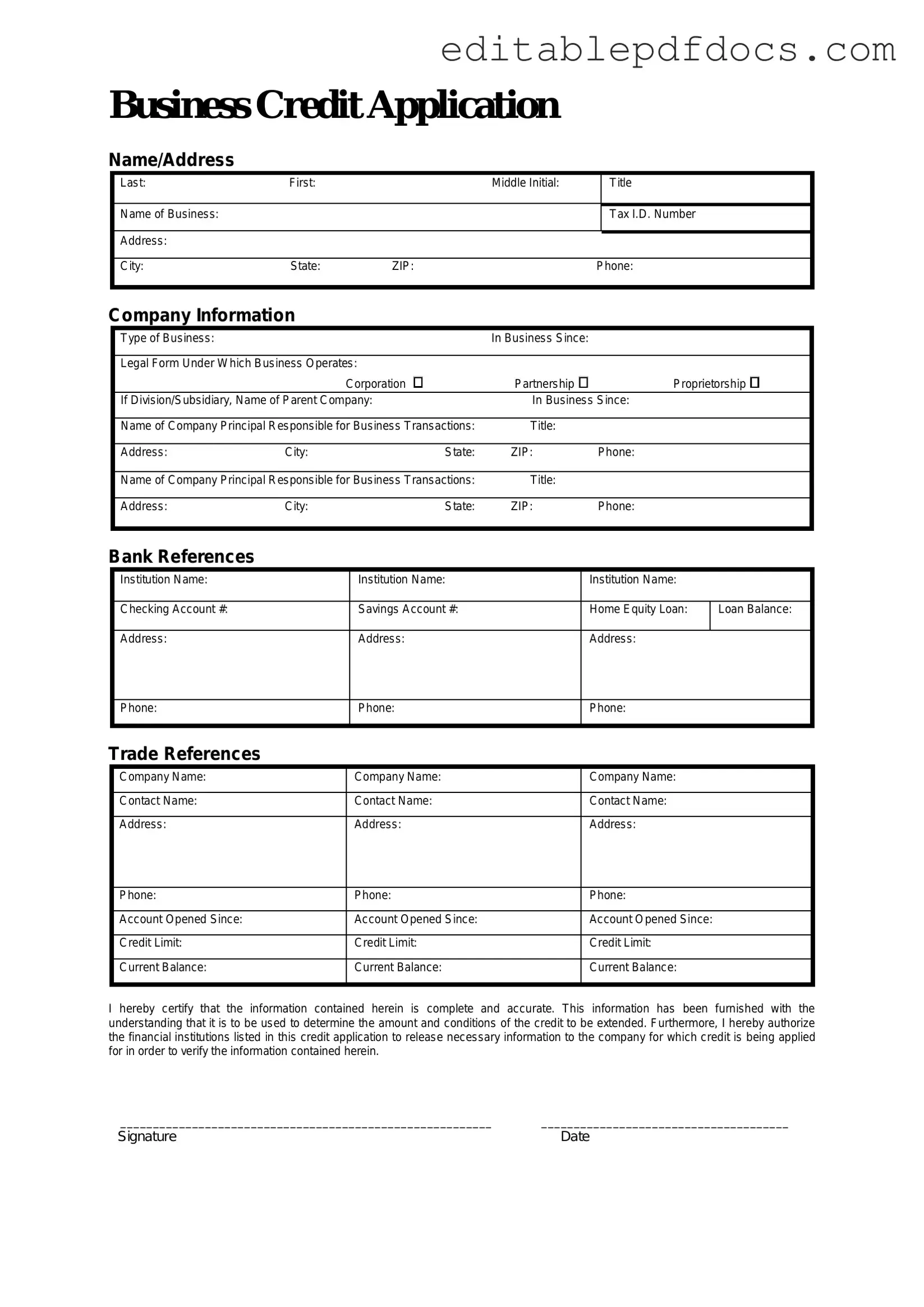Filling out a Business Credit Application form can be a crucial step for any business seeking credit. However, many individuals make common mistakes that can hinder their chances of approval. Understanding these pitfalls can help ensure a smoother application process.
One frequent mistake is providing incomplete information. Applicants sometimes overlook sections or fail to provide necessary documentation. Missing details can raise red flags for lenders, leading to delays or outright denials.
Another common error is failing to check credit history before applying. Businesses should be aware of their credit score and any outstanding debts. A poor credit history can significantly impact the decision-making process of lenders.
Many applicants also neglect to include accurate financial statements. Lenders typically require up-to-date financial documents, such as balance sheets and income statements. Providing outdated or incorrect information can create doubts about the business's financial health.
Additionally, some individuals do not clarify the purpose of the credit. It is important to specify how the funds will be used. This transparency can build trust with lenders and demonstrate responsible financial planning.
Another mistake involves not reviewing the application for errors. Simple typos or inaccuracies can undermine the professionalism of the application. Taking the time to proofread can make a significant difference in the perception of the business.
Applicants may also fail to provide references. Lenders often look for character references or business relationships that can vouch for the applicant's credibility. Omitting this information can make the application feel incomplete.
Furthermore, some individuals do not understand the terms and conditions associated with the credit. It is vital to read and comprehend the fine print. Ignoring this step can lead to misunderstandings about repayment terms or fees.
Lastly, applicants sometimes rush the process, leading to poorly thought-out decisions. Taking the time to gather all necessary information and reflect on the application can lead to better outcomes. A careful approach often yields more favorable results.
By being aware of these common mistakes, applicants can enhance their chances of successfully obtaining business credit. A well-prepared application can pave the way for future financial opportunities.
